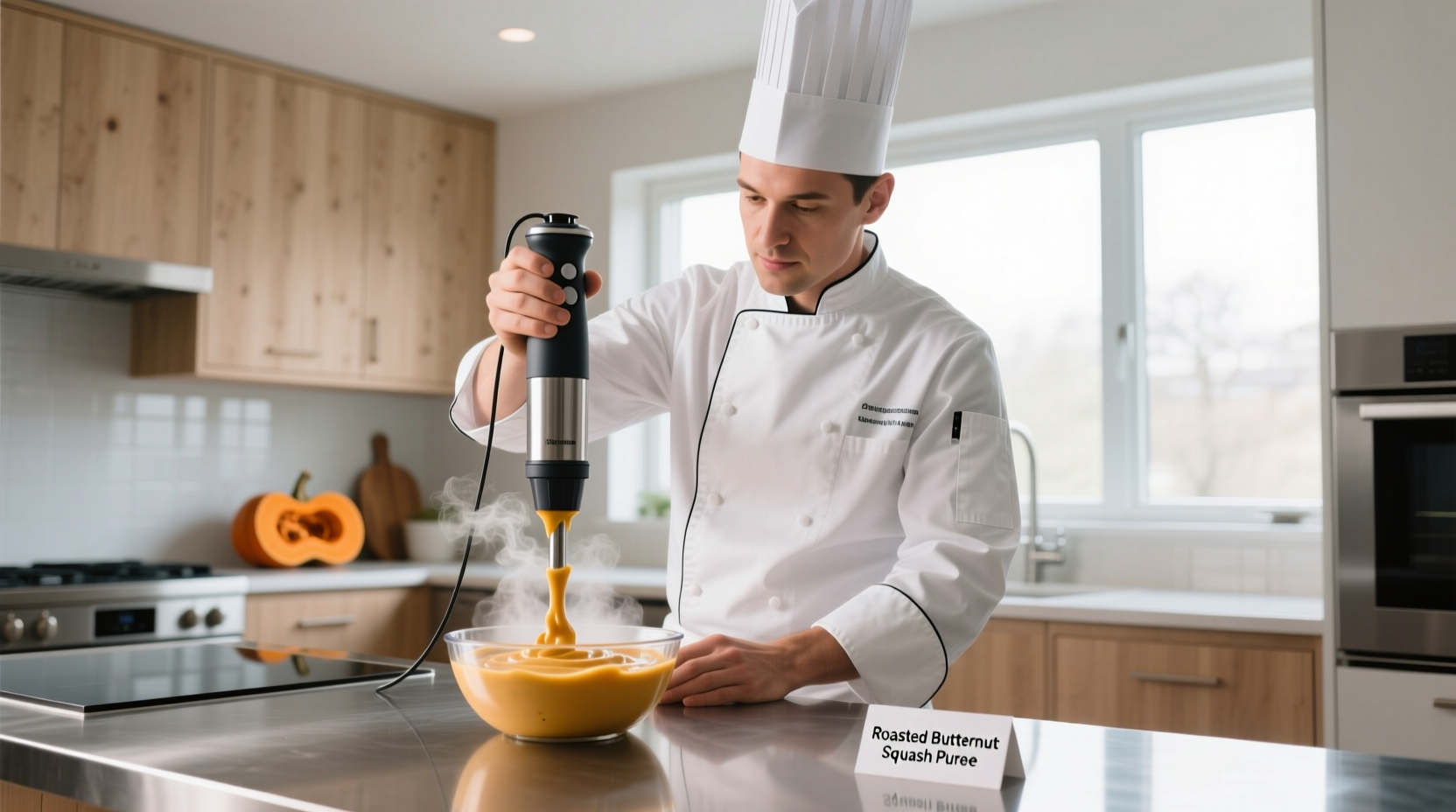Essential Equipment: Choosing Your Pureeing Tool
Not all pureeing tools create equal results. Your choice depends on food type, required texture, and intended user:
| Equipment | Best For | Texture Result | Processing Time |
|---|---|---|---|
| High-speed blender | Large batches, fibrous vegetables | Smoothest consistency | 45-90 seconds |
| Food processor | Small batches, cooked fruits | Slightly textured | 20-40 seconds |
| Immersion blender | Hot soups, small quantities | Moderately smooth | 60-120 seconds |
| Food mill | Baby food, seed removal | Lump-free, fiber-separated | Manual effort required |
According to the National Institute on Aging, proper equipment selection prevents choking hazards for seniors with swallowing difficulties. For baby food, the American Academy of Pediatrics recommends avoiding regular blenders for infants under 6 months as they may leave microscopic particles that pose aspiration risks.
Step-by-Step Pureeing Process
Follow this professional chef technique for perfect purees every time:
Preparation Phase
- Cook ingredients properly: Steam or boil until fork-tender but not waterlogged (overcooking destroys nutrients)
- Cool to safe temperature: Hot foods create steam pressure that can cause blender explosions
- Cut into uniform pieces: 1-inch cubes ensure even processing
Pureeing Technique
- Add liquid strategically: Start with 2-4 tablespoons liquid per cup of food (broth for savory, breast milk/formula for babies)
- Pulse first: 3-5 short pulses break up large chunks before continuous blending
- Blend in stages: Stop and scrape sides every 15 seconds for even texture
- Adjust consistency: Add liquid 1 tablespoon at a time until reaching target texture

Texture Guide for Different Needs
Texture requirements vary significantly based on user needs. The American Academy of Pediatrics specifies these critical texture guidelines:
Baby Food Stages
- 4-6 months: Completely smooth, no lumps (15-20 second blend time)
- 6-9 months: Slightly thicker with micro-textures (10 second blend time)
- 9-12 months: Soft lumps for chewing practice (pulse only)
Senior Nutrition Requirements
The National Institute on Aging identifies three critical texture levels for older adults with dysphagia:
- Pureed (Level 4): Holds shape on spoon, no separation
- Minced (Level 5): 1/8-inch particles, moist consistency
- Mechanical soft (Level 6): Requires minimal chewing
Troubleshooting Common Pureeing Problems
Lumpy Purees: Three Fixes
- Strain through fine mesh sieve using back of spoon to press through
- Add 1 tablespoon hot liquid and blend 15 seconds longer
- Cook ingredients longer before pureeing (especially root vegetables)
Too-Thin Consistency Solutions
- Add cooked potato or white beans (1 tablespoon per cup)
- Simmer uncovered for 5-10 minutes to reduce liquid
- Mix in instant potato flakes (1/2 teaspoon at a time)
Food Safety and Storage Guidelines
Improper storage causes 23% of homemade puree-related foodborne illnesses according to USDA Food Safety and Inspection Service. Follow these evidence-based protocols:
- Immediate cooling: Place puree in ice bath for 15 minutes before refrigeration
- Storage containers: Use airtight containers with 1/2 inch headspace for expansion
- Refrigeration: Consume within 48 hours (vs. 72 hours for regular cooked food)
- Freezing: Portion into ice cube trays, then transfer to freezer bags (6 month shelf life)
- Reheating: Heat to 165°F (74°C) internal temperature before serving
Advanced Pureeing Techniques
Professional chefs use these methods to enhance flavor and nutrition:
- Nutrient preservation: Add lemon juice or ascorbic acid to prevent oxidation in apple and pear purees
- Flavor layering: Puree in stages—add herbs after initial blending to preserve volatile compounds
- Temperature control: Never puree extremely hot foods (above 160°F/71°C) to prevent nutrient degradation
- Batch processing: Puree in quantities no larger than 2 cups at a time for consistent texture
When Pureeing Isn't Appropriate
Not all foods should be pureed. The Academy of Nutrition and Dietetics identifies these high-risk items:
- Raw cruciferous vegetables (cauliflower, broccoli) - causes gas
- Honey for infants under 1 year (botulism risk)
- High-nitrate vegetables (spinach, beets) for babies under 6 months
- Foods with pits or large seeds (choking hazard if not completely removed)











 浙公网安备
33010002000092号
浙公网安备
33010002000092号 浙B2-20120091-4
浙B2-20120091-4